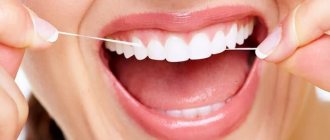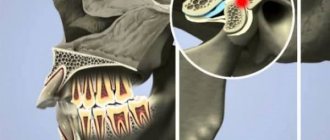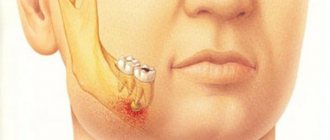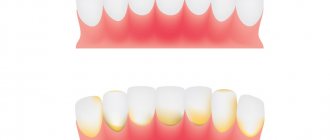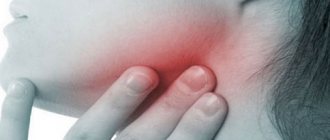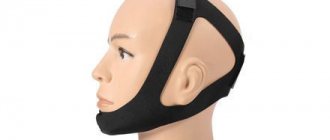There are many types of jaw bandages, and they can be made by hand or sold ready-made
When the lower jaw is damaged, it is often necessary to make the moving parts immobile. For this, the only way out is to use bandages. The sling bandage for the jaw is easy to make and use.
Classification of dressings
Dressings are classified according to several parameters. According to the purpose of use, the following types of medical dressings are distinguished:
- holding;
- pressing;
- immobilizing;
- occlusive - to seal the wound from exposure to water and air;
- aseptic;
- medicinal - for supplying medicinal substances to the damaged surface;
- corrective - to correct deformities.
Types of dressings vary depending on the material used:
- soft;
- hardening (gypsum and starch);
- hard (tires).
When to use the product: indications
At its core, this type of product is a strip of fabric or bandage that provides fixation on the head with the lower jaw pressed to the upper.
For immobilization, a sling-shaped bandage is used for the following purposes:
- in order to prevent displacement of jaw fragments, a temporary sling is applied when the victim is delivered to the hospital;
- constant wearing of such a product is used for medicinal purposes until the fusion of the jaw bones occurs;
- if for a long time there is no opportunity to go to the hospital to see a qualified specialist;
- severe condition of the patient, limiting the ability to carry out basic medical measures.
It should be taken into account that temporary immobilization does not allow successful treatment of jaw fractures. As a rule, it is used within 4 days after the injury. But in emergency situations, this period may increase until the favorable moment arrives when complex therapy will be provided.
Basic rules for applying bandages
The ability to apply a simple bandage can be useful to everyone, so you should know the basic rules and techniques used when applying different types of bandages:
- do not touch the wound with your hands;
- use sterile dressing material;
- carry out the dressing facing the victim in order to understand whether the manipulation does not cause unnecessary pain;
- bandage from bottom to top and from the periphery to the center;
- roll out the bandage without removing it from the body;
- bandage the limb in a position comfortable for the victim: legs straight, arms slightly bent.
In this case, the bandage should be moderately tight so that it does not interfere with normal blood circulation and does not move out.
Algorithm
A sling splint is a standard medical procedure that can be performed by a nurse.
Its algorithm is as follows:
- the nurse sits the patient in a comfortable position and explains to him the purpose and procedure of this manipulation;
- during the procedure, the nurse can comment on her actions;
- a bandage with medicine is applied to the nose area, a sling is placed on top in a direction transverse to the face;
- the upper parts of the sling are carried below the ears and secured to the neck;
- the lower parts of the sling are placed just above the ears and tied at the back of the head.
Required equipment:
- sterile napkin;
- kidney-shaped coxa;
- tweezers.
How a sling bandage is made description:
- the nurse takes a bandage strip 6-8 centimeters wide and 50-70 centimeters long;
- the size of the material should allow the bandage to be fixed in the area of the nose or chin;
- for bandages that will be fixed on the forehead or back of the head, a bandage up to 1 meter long and 15-20 centimeters wide is required.
Application techniques depending on the type of dressing used and the place of its application
The technique of applying bandages for different parts of the body is different and depends on what type of medical bandage is used.
For head injuries
What bandage is used to provide first aid for a head injury? There are several varieties:
- the frenulum is applied to the parietal and occipital parts;
- the cap and cap of Hippocrates cover the entire scalp;
- a figure-of-eight monocular or binocular bandage is used for eye injuries;
- A sling bandage is used for injuries to the facial part of the head.
For limb injuries
When applying bandages to limbs, it is especially important to adhere to the rule of bandaging in the direction from bottom to top. This technique will prevent the accumulation of venous blood in the unligated parts of the limb.
A reliable spica bandage is used to bandage the shoulder and hip joints. A figure-eight bandage is applied to the elbow and knee joints. The lower leg, shoulder, forearm and thigh are bandaged in a spiral or spicate manner.
Which bandage is used depends on the degree of load.
Pressure bandage and tourniquet
A pressure bandage is used for minor bleeding of a capillary or venous nature, as well as for violation of the integrity of small arteries. It can be left on the body until the victim is admitted to a medical facility.
A tourniquet is used for bleeding from large arteries. It should not remain on the body for more than 1 hour in the cold season and more than 2 hours in the warm months.
Immobilization splint
When applying an immobilizing splint bandage to the limbs, you should adhere to the basic rule - grab the joints above and below the injury site, except in cases of hip and shoulder fractures, when the entire limb is fixed at three points.
In areas of bony protrusions, the splint is lined with soft material to prevent the formation of bedsores and abrasions.
Application of sling dressings
A sling-shaped bandage is very convenient when it is necessary to apply it to protruding parts of the body:
- outer area of the nose;
- chin and jaw area;
- back of the head;
- forehead area;
- eyes, while the bandage can be applied to one or both eyes;
- crown area.
A sling bandage on the lower jaw can be installed in cases of dislocation or fracture of the jaw, as well as in situations where it is necessary to fix the position of the jaw.
Sequence of production and use
The fabric will be needed based on the specific location of the bandage:
- If the bandage is intended to be placed on the chin or nose, the width of the bandage should be 6-8 cm, length – 60-70 cm.
- For a bandage on the back of the head and forehead, the width of the fabric should be 15-25 cm, length - 1 meter.
Important: the person applying the bandage must wear sterile gloves or thoroughly clean their hands before manipulation.
Instructions for applying a sling bandage:
- the strip of fabric must be cut at both ends, approximately 20 cm of uncut material should remain in the middle, this is how a sling is made;
- the one who applies the bandage must face the patient;
- the patient should be warned that a bandage will be applied, sit straight and calm, the head should be directed straight without bending;
- Use sterile tweezers to hold the sterile bandage and place it on the open wound, if any;
- the uncut part of the sling material is placed on a napkin, the ends of the bandage are fixed on the opposite side of the head;
- The lower sling straps are fixed on the upper part of the head, the upper ones - on the lower part, closer to the cervical region.
A variety of ways to apply a sling bandage
Differences in the position of the bandage depending on the location of the injury:
| Localization of injuries | Installation of the bandage | Special attention |
| Nose injury | The bandage is crossed and stretches from the affected area through the ears. The ends of the bandage are secured in the back of the head and neck. | The material should not injure the auricle or obscure it, making it difficult for the patient to hear. |
| Damage to the frontal area | The bandage is placed on the forehead, its ends cross and go to the occipital and lower occipital zone. | |
| Chin and jaw injury | The fabric of the bandage completely fixes the lower jaw. The lower end after the cross is attached in the crown area. The upper one is directed to the back of the head, where another cross is made and finally secured on the patient’s forehead. | The material should not be tightened too tightly so as not to interfere with the patient’s free breathing. |
| Wound to the back of the head | From the back of the head, the ends, after crossing, are directed to the forehead and chin area and are attached there. | |
| Trauma to the parietal area | After installing the middle of the bandage, the ends are crossed and secured in the occipital and submandibular area. | |
| Eye damage | For this wound, crossing the ends of the bandage is not required. They are fixed on the parietal and occipital zones. | As they move, they should surround, but not touch, the ears. |
Important: this type of bandage can be applied to the victim by anyone for a short period of time, before seeking medical help; for long-term wearing, a sling-shaped bandage must be applied by a doctor or any other physician.
The photos and videos in this article will tell you how to properly apply this type of bandage to your jaw and chin.
Compression bandages
They are widely used for diseases of the veins of the lower extremities. When applying such a bandage, it is important to follow the rule of gradually reducing the degree of compression from the foot to the knee. There should be no numbness in your fingers. The patient should feel the effect of a tight-fitting boot.
The self-fixing medium-stretch ones - PÜTTERBINDE® (“Pütterbint”) and the long-stretch Lastodur® straff (“Lastodur tight”) from HARTMANN are very convenient to use. They vary in size and degree of elasticity.
How to make it yourself
To make a sling with your own hands, you need to take a long piece of gauze or a wide bandage (approximately 60 or 70 cm). After this, cut it at both ends and leave a solid gap in the middle, 15 to 20 centimeters long (it is best to use a bandage 6 to 8 cm wide). Thus, the bandage has four free ends.
The device must be made of a sterile bandage. This need is explained by the frequent presence of an open wound located at the site where the bandage was applied.
Occlusive dressings
They have unique properties: they accelerate the process of epithelization of wounds, improve tissue granulation even in the case of chronic ulcers, and protect the skin from environmental influences. They have found their use in military field surgery for penetrating lung wounds, as well as in dermatology, where they are used to enhance the effect of medicinal drugs.
If you need help choosing, our specialists will advise you online or by phone and tell you the name of the bandage you are looking for.
In what cases is a sling applied?
A sling-shaped bandage can be applied to the nose, jaw, forehead and crown
. A sling-shaped bandage on the lower jaw is the name given to a strip of fabric with two longitudinal cuts at the ends. A properly applied bandage immobilizes and fixes damaged, displaced jaw bones.
A sling-shaped bandage is applied to the protruding parts of the face:
- nose;
- chin and lower jaw;
- area of the forehead, crown and back of the head;
- the sling can be applied to one or both eyes.
A sling is applied to the lower jaw during a dislocation, during a fracture to prevent the movement of jaw fragments, after wounds, burns, and surgical interventions. In orthodontics, a jaw retainer is used to correct an abnormal bite and should be worn before going to bed.
Unlike bandages, the sling is comfortable, not bulky, and does not require the use of glue or adhesive tape for fixation.
Indications
The Deso bandage is necessary to immobilize the arm from the shoulder to the finger phalanges when:
- shoulder dislocation and to prevent relapses;
- fracture of the humerus;
- collarbone fracture;
- scapula fracture;
- ligament damage;
- paralysis of the upper limbs;
- arthritis, periarthritis and arthrosis;
- secondary myositis, neuritis, paresis and plexitis;
- during the recovery period after surgery on the upper limb and wearing a cast.
Can be used for simple fractures - when there is no risk of displacement and damage to soft tissues from bone fragments. Sometimes prescribed for bruises and cuts on the hands.
Rules for wearing a Deso bandage
How to choose and wear correctly?
A ready-made Deso-type bandage on the shoulder joint is worn over underwear according to the principle of a T-shirt. The affected arm is bent at a right angle, the forearm parallel to the floor. Above the elbow, the product is attached to the body horizontally using a belt. The device should not dangle or squeeze.
The appropriate size is selected by a traumatologist or orthopedic surgeon. He puts the bandage on the patient for the first time and teaches the necessary technique.
How much to wear and how to sleep?
The duration of wearing the Deso bandage depends on the nature of the injuries. When a shoulder is dislocated, it is worn from a week to a month. Younger and more active patients require longer immobilization to prevent secondary injuries. For uncomplicated closed fractures of the shoulder or collarbone, the product is worn for about a month.
How much to wear during the day and whether it can be removed at night, the doctor indicates. When worn around the clock, the most common option is to sleep on your back.


